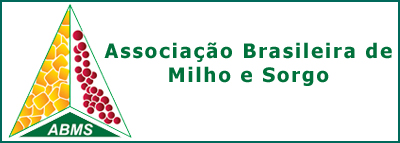SEVERITY OF CORN STUNT DISEASE ON MAIZE GENOTYPES IN THE MIDWEST OF THE BRAZILIAN STATE OF SANTA CATARINA
DOI:
https://doi.org/10.18512/rbms2022v21e1278Abstract
In an attempt to provide regionalized information about maize genotypes’ response to corn stunt disease complex, this study evaluated the corn stunt disease severity and productivity of conventional (7) and transgenic (11) maize genotypes under natural infestation of its insect vector, Dalbulus maidis (Hemiptera: Cicadellidae). The work was carried out in Campos Novos, SC, Brazil, during the 2020/2021 crop season. In a randomized block design, the genotypes were sowed in experimental plots of 14 m2 , with four replicates (plot) per genotype. At 90 days after sowing, the severity of corn stunt disease was analyzed using a visual symptoms scale, while the maize productivity was assessed at physiological maturation. There was variability for response to stunt disease in the genotypes and a negative correlation between severity and grain yield. Among the conventional genotypes, P3456, FS055, SCS154 Fortuna, SCS156 Colorado, and SCS155 Catarina had lower severity of corn stunt disease. For the transgenic genotypes, AS1757 PRO3 and P3551 PWU were more resistant, while B2418 VYHR, AG9025 PRO3, and P1225 VYHR had high corn stunt disease severity. The corn stunt severity varied from 1 (absence of symptoms) in P3551 PWU to 4.8 (more than 75% of leaves with symptoms) in P1225 VYHR, while the lowest and highest yields were obtained for BG7056 (1,253.7 kg.ha-1) and P3016 VYHR (9,794.6 kg.ha-1), respectively. The genotypes with low corn stunt disease severity are suitable options for sowing in the Midwest region of Santa Catarina, Brazil, in conditions of high population pressure of D. maidis.
Downloads
Published
How to Cite
Issue
Section
License
Authors retain copyright and grant the journal right of first publication with the work simultaneously licensed under the Creative Commons Attribution License that allows the sharing of work and recognition of the work of authorship and initial publication in this journal.
Authors are able to take on additional contracts separately for non-exclusive distribution of the version of the paper published in this journal (eg, in an institutional repository or publish as a book), with acknowledgment of its initial publication in this journal.
Authors are permitted and encouraged to post their work online (eg, in institutional repositories or on their website) at any point before or during the editorial process, as this may leadto productive exchanges, as well as increase the impact and citation of published work.



